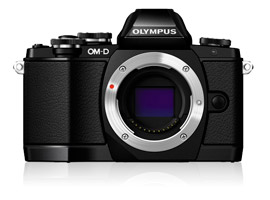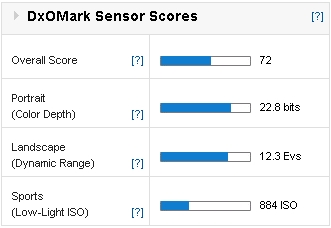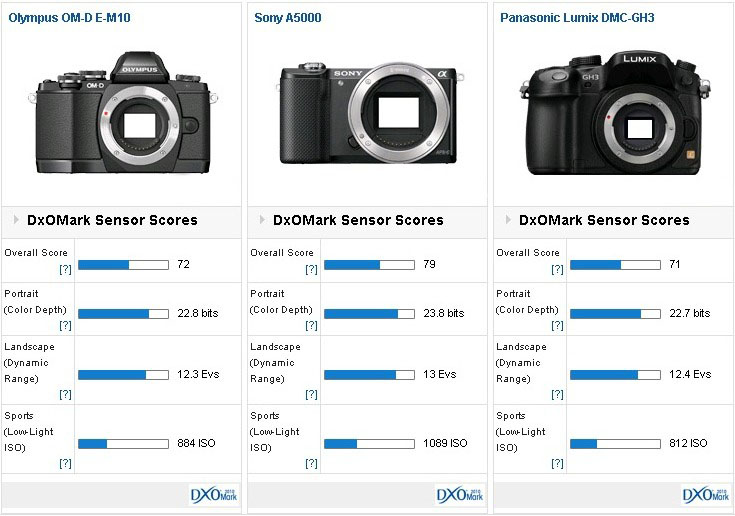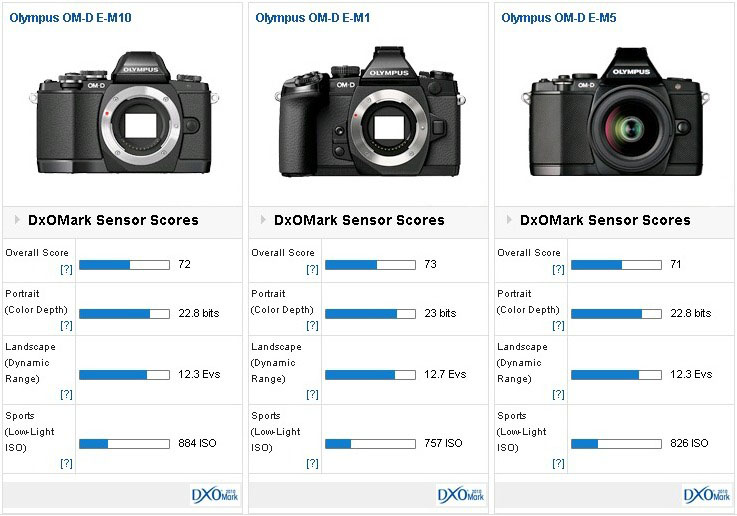Introduction
After the success of the OM-D E-M5 and high-end E-M1 models, Olympus has created an entry-level model in the form of the new OM-D EM-10. It bears the familiar design and layout of the earlier mid-range E-M5 including a built-in EVF and folding rear LCD, although it’s slightly smaller and lighter still. In terms of specification and capabilities the EM-10 shares a lot more with the E-M5 than one might expect. It has a similar 16-Mpix four-thirds CMOS sensor, same 1.44M dot resolution LCD panel in the viewfinder, and it has the related shutter with a 1/4000 sec minimum but with an improved 1/250 sec flash sync.
The new model can even boast of some improvements over the mid-tier model including the higher resolution rear touch panel and the latest TruePic VII level processor of the OMD- E-M1 to handle all the data. This more powerful processor allows 1080/30p MOV movie clips at higher bit rates (24Mbps) than the earlier models and, similarly, allows the E-M10 to achieve 8 fps using single-shot AF (though that drops to 3.5fps when continuous AF is enabled).
The E-M10 also features a small built-in flash and has the firm’s in-body stabilization. However, it lacks the coveted 5-axis stabilization system of the E-M1 and E-M5 instead opting for a simpler 3-axis system and with a slightly reduced effectiveness of 3.5 stops (as opposed to 4-stops). Although the OM-D E-M10 ships with the new ‘pancake’ style 14-42 EZ power-zoom in some markets, in the US, the E-M10 is bundled with the standard 14-42mm kit lens at around $800.
Key specifications
- 16-Mpix Micro Four Thirds CMOS sensor
- 8 fps continuous shooting (3.5 fps with C-AF)
- Tilting 1.04M dot LCD touchscreen
- 1.44M dot LCD viewfinder
- Wi-Fi with remote control and file transfer to smartphones
- Focus peaking
- ‘3-axis’ in-body stabilization
- Twin control dials
- Built-in flash
Olympus OM-D E-M10: One of the highest scores for a Four Thirds sensor
With a DxOMark a score of 72 points the diminutive E-M10 achieves one of the best scores we’ve seen for a Four-Thirds size sensor. Both the Color Sensitivity at 22.8-bits and the Dynamic Range at 12.3Evs are impressive for this size sensor but the low light score (884 ISO) remains a little on the low side. But it’s not far off the best 14-bit APS-C sensors in that regard and is in fact better than some of the current APS-C CMOS sensors from Canon, including that found on the current Canon EOS 700D.
Olympus OM-D E-M10 Versus Sony A5000 Versus Panasonic Lumix DMC-GH3: Competitive sensor performance
Compared to mirrorless rivals, the Sony A5000 and the out going high-end Panasonic Lumix DMC-GH3 the sensor in the Olympus OM-D E-M10 is definitely one of the best performing of its type. With some 7 points behind the new Sony A5000, the smaller sensor of the Olympus performs well, varying between -1/3 to -1 stop behind in image quality across the individual use case scores.
Contrary to popular belief the 1 stop advantage between the APS-C sensor and that of the smaller four Thirds device is not in ISO sensitivity, at least not when comparing these two models. The difference between the two here is just -1/3 of a stop. The A5000’s +1 stop advantage is in DR followed closely by Color sensitivity where it has a +2/3 stop advantage over the Olympus.
Sensor performance between the GH3 and E-M10 is, unsurprisingly perhaps, very close. And from that we can assume they share a related sensor.
Olympus OM-D E-M10 Versus Olympus OM-D E-M1 Versus Olympus OM-D E-M5:
Compared with the earlier mid-range OM-D E-M5 on which the new models shares so much in common with, it seems certain the two use the same sensor. Both the Color Depth and Dynamic range scores proved identical in out tests. The only discrepancy between the two was revealed during ISO sensitivity. There has been some minor enhancement there over the E-M5, but not enough to warrant upgrading. The slight improvement in the overall DxOMark scores, of just 1-point, wouldn’t be noticeable in real-world use.
Compared with the firm’s top-tier OMD- E-M1 we already know for the spec, that this sensor has been modified to include dedicated on-chip phase-detection AF pixels. Despite that the E-M10 and E-M1 sensor share similar performance characteristics. Although in fairness, the E-M1 has slightly better color depth and dynamic range. Low light performance isn’t quite at the same level, due, we suspect to the previously mentioned dedicated AF pixels.
Conclusion
With the introduction of the OM-D models Olympus has rightfully garnered a lot of praise. While the E-M1 is more likely to entice hardcore enthusiasts, the E-M10 is likely to appeal to the same users that were attracted by the original E-M5. In that respect the E-M10 offers very good image quality, approaching that of the current APS-C Alpha mirrorless models from Sony, while offering users all the benefits of the Micro Four Thirds system. The decision to adopt a down-graded 3-axis stabilizer system is the only real downside, but given the E-M10 offers most of the capabilities of the E-M5 for around a $100 less, body only, it seems like a small price to pay.









DXOMARK encourages its readers to share comments on the articles. To read or post comments, Disqus cookies are required. Change your Cookies Preferences and read more about our Comment Policy.